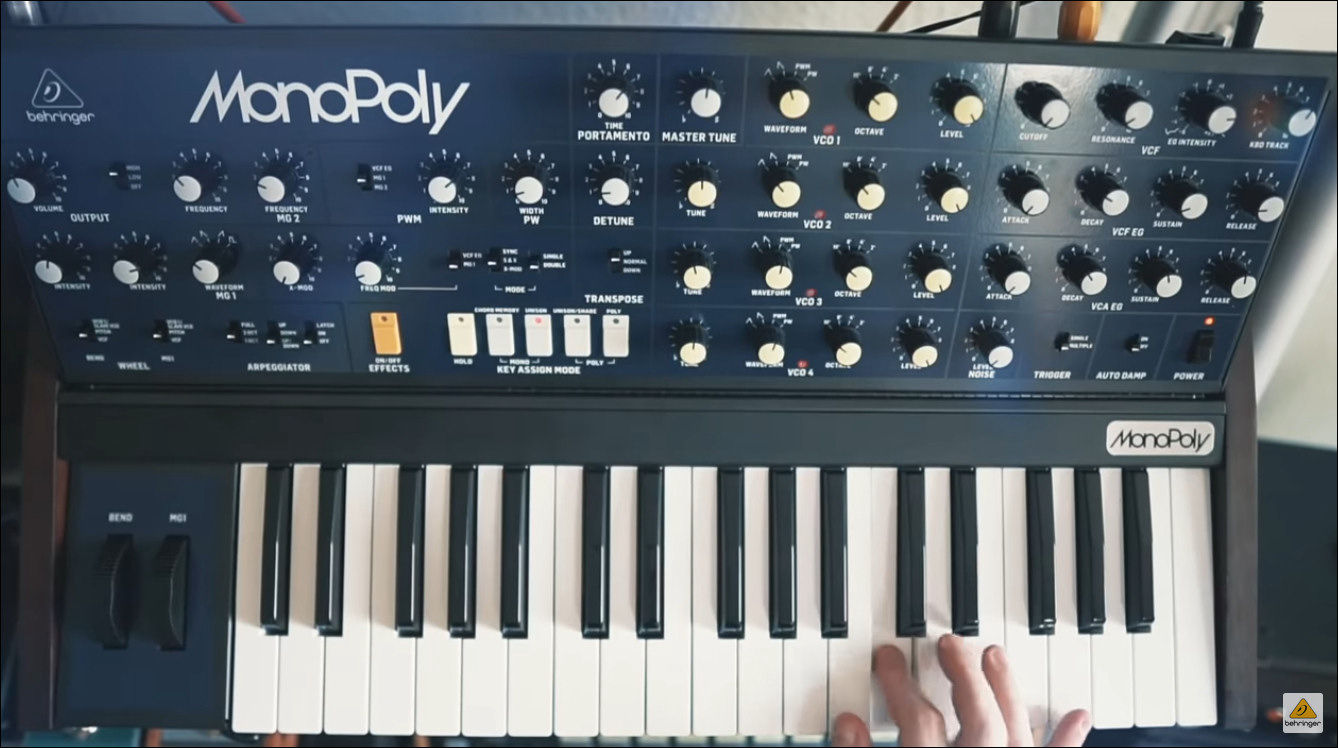Behringer are getting ready to start manufacturing their reproduction of the Korg MonoPoly with the first units to ship from their factory by November. A price point will be revealed once they calculate manufacturing costs.
The Korg MonoPoly was produced between 1981-1984. It packed powerful features like arpeggiator, chord memory and oscillator sync into an affordable and lightweight package.
In the early ’80s the Korg MonoPoly was reviewed for One.. Two.. Testing magazine by Vince Clarke (Depeche Mode, Yazoo) who famously commented, “It sounded like four cheap synthesizers all playing together.” Harsh as his criticism may have been, Clarke did give honest insight into the strengths and weaknesses of the device’s design.
It would turn out that the original incarnation wasn’t built to last. Very few MonoPoly’s survived the test of time which made them highly sought after on the resale market.
Enter The Behringer MonoPoly

The Behringer MonoPoly.
Behringer’s recreation shares the same layout of the original; it doesn’t cut features but instead introduces potentially useful additions. Most notably, the Auto-Tune function that shifts the oscillators back into A440 tuning is a great feature for the stage and recording studio alike.
The introduction of Midi ushers this classic into the present as Korg ended production of the original just before Midi was born. Midi IN, OUT and THRU are available via hardware ports or USB. Behringer also keep the CV/Gate options intact making it easy to integrate into a modular setup.
The flexibility of key modes offered can split the oscillators into four simultaneous Arpeggios as well as Poly, Chord Memory, Unison and Unison Share (which divides the oscillators as each consecutive note is triggered). Contrary to its name, the MonoPoly isn’t a fully polyphonic mode but rather paraphonic, giving you four simultaneous notes at a time (much like their recent Minimoog clone the Poly D).
At 8:38 in the above video, Behringer demonstrate the round robin arpeggiation that made the MonoPoly a worthy synth to resurrect. When switched to Poly mode, the MonoPoly’s arpeggiator can even behave as a simple rhythm machine. Assign different waveforms to each of the four oscillators and a producer can build a drum pattern as it cycles through them.
Those hoping to sync the clock externally will be pleased to hear Behringer have just announced their updated firmware is rock solid after recent beta testing. This should be available publicly for the RD-8 within the next two weeks. It’s safe to assume the MonoPoly will also be stable when slaved.
Industry Opinions
Detroit techno pioneer Thomas Barnett told Selector, “The MonoPoly looks like an amazing chance for any producer to get a four-voice synth. At such a discount, you’d be silly to pass on this classic!” You can follow him on Instagram to see what he does with the MonoPoly.
“MonoPoly looks tasty; I have the CAT and Pro1,” said U.K. house new schooler Madvilla. “I think the MonoPoly would be good for quick melodies where you wanna experiment more with synth parameters rather than the chord progression itself.”
More information on the MonoPoly reproduction can be found on the Behringer website.
Image credit: Behringer, Korg


